The Cockatoo is an iconic bird known for its sociability, gregariousness and high intelligence and are some of noisiest characters in the Australian bush. Cockatoos are in fact a family of parrots called Cacatuidae that are uniquely identifiable by the head crest of feathers, used as a communicative device to other Cockatoos by standing erect when angry or excited.
Cockatoos are an important animal in the Australian Indigenous people’s mythology, acknowledged for their important part in the cycle of birth, death and rebirth of plants in the landscape. For the Indigenous people and more broadly, Cockatoos represent illumination – the sentinel guard and guide through darkness; they speak of commitment to partnerships and to the importance of the safety of one’s group; and they represent comedic relief with the spark that mischief and curiosity bring to life!
There are approximately 21 species of Cockatoo and they are all endemic to the Australasian region, including in Indonesia, the Philippines, New Guinea and other islands, while 14 species are found exclusively in Australia. The nature of their habitat ranges from semi-arid to the wet tropics. While some species of Cockatoo are considered endangered, like the Yellow-Crested Cockatoo, others like the Sulphur-Crested Cockatoo are quite common, even in many urban areas. (1)
Cockatoos are very social, noisy and unreserved birds and often travel in large flocks. They have the capacity of mimicry – able to repeat human speech and can live up to an incredibly old age, even 80 or 90 years is possible! (2) Despite grave destruction of many of their native foraging grounds and nesting sites, some species have adapted by learning how to forage for agricultural cereal grains and even the exotic pine tree cones. (3)
When they are kept as pet birds they are extremely loyal. They develop a very strong bond with their owners and due to their high level of intelligence, they can even be quite demanding of affection and interaction. If this kind of unconditional love sounds appealing to you, you might want to consider other characteristics of the Cockatoo.
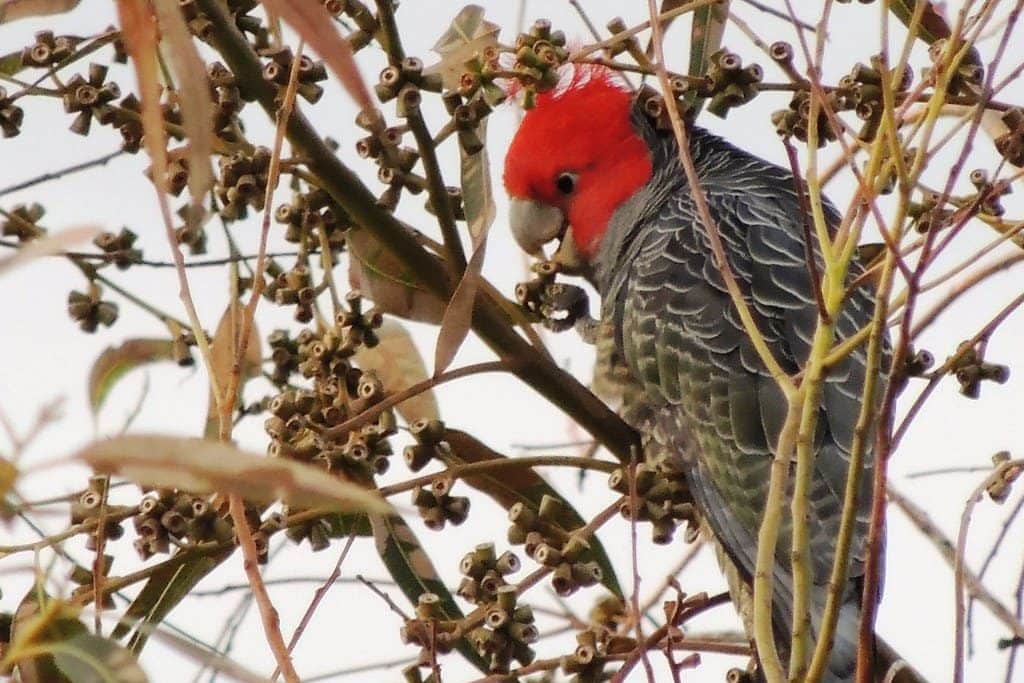
They are notoriously persistent shriekers and don’t take no for an answer. They have also been known to learn how to undo the latches of their cages, exhibiting their great intelligence. Most importantly, a Cockatoo in a cage is akin to a person in solitary confinement and will develop extremely difficult behavioural traits if left unstimulated by its domestic surroundings. A domestic Cockatoo deprived of interaction with their owner can lead to behaviour akin to self-harm – whereby they may pluck out their own feathers until they are left bare. (4)
Undoubtedly, this all this demonstrates their incredible intelligence, so much so that parrot experts are particularly excited by the mind behind those wise eyes of the Cockatoo – suggesting that they may even have the rough intelligence of a 1-2 year old human child.
Cockatoo Symbolism and Meaning
The Cockatoo family is linked with both masculine and feminine energies of creation have been a strong part of traditional mythologies. They represent the element of fire and are believed to accompany the deceased to the afterlife. They are thought to understand deeply the nature of life and death and are revered by Indigenous people for their role in landscape regeneration. In present times however, there is a lot of hostility towards Cockatoos who are seen as a pest that decimate crops. They remain an iconic Australian bird and are seen to represent the familiar gregarious, fun-loving, comedic character associated with Australians.
Cockatoo Native Australian Aboriginal Symbolism
For Aboriginal Australians, the Cockatoos are treated with great respect. They are acknowledged for their important part in the cycle of birth, death and rebirth of plants in the landscape. They are invited to eat during feasting times when food is plentiful, and in turn they help to spread the seeds of native plants for next season. In this way, the birds are linked with the sacredness of the seed and the continuous rebirth and fertility of the land. (5) In a traditional creation story, the Cockatoo is the first creature to ever die, instigating their search to better understand the nature of mortality. Ultimately the Cockatoo comes to understand that death is only a part of transformation and immortality is gained through this process of rebirth and change.
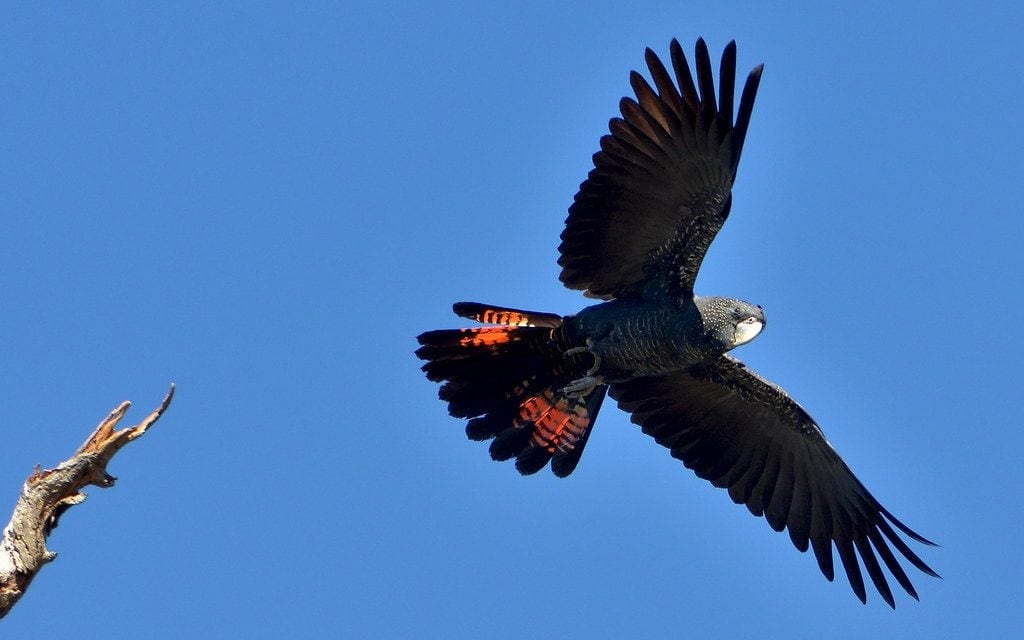
Cockatoos play a fundamental part of Aboriginal Dreaming, the creation lore. It is said that the Black Cockatoo holds the genetic memory from the time of creation. From the Black Cockatoo’s spirit story comes most powerfully the lesson of surrender. We must accept with great patience what may come in the journey and which remains unknown in the beginning will reveal itself over the course of time. Black Cockatoo encourages us to remain contemplative and unexpectant. Life’s mysteries will unravel themselves if we have patience and if we do not seek specific results or answers – trusting in what is meant to be. The Black Cockatoo tells us to face our fears as a way to practice acceptance and going with the inevitable flow of life, in a way creating more space to see all opportunities as they present themselves. (6)
While the Black Cockatoo’s story is of trust in allowing the path to unravel, the Sulphur-Crested Cockatoo is said to be able to illuminate mysteries within darkness, the former passes the light of wisdom to the latter. Sulphur-Crested Cockatoo established itself from the platform of knowledge provided by Black Cockatoo. (7)
Sulphur-Crested Cockatoo, with the bright yellow crest on the head that is revealed and concealed at will, symbolises illumination – a gift from the Black Cockatoos connection to the source of eternal wisdom. The revelations of light touching darkness, the Sulphur-Crested Cockatoo eliminates mysteries and shows the path of opportunity. This bird also symbolises new beginnings – the potential that a new day brings. (8)
Red-Tailed Black Cockatoo carries the energies of the Grandmothers, being influenced by the lunar cycle and the female creation forces, represented by the red on its tail – symbolising the blood of female creationism. While the Yellow-Tailed Black Cockatoo is influenced by the sun and thus masculine energies and is a symbolism representation of Grandfather energies. The White-Tailed Black Cockatoo is unlimited in nature and represents the knowledge potential brought from heavenly realms. (9)
Cockatoo Australian Symbolism
Cockatoos are team players. They operate under strict mating partnerships and also form flocks, known as ‘crackles’ that noisily roam between foraging grounds. They feel comfortable feeding both in trees and on the ground as they are always on the lookout for each other. Even when resting, Cockatoos will have a guard or sentinel who will be ready to shriek loudly to warn the group when any danger is approaching. This noticeable behaviour entered Australian colloquialisms which refers to a ‘cocky’ as someone on the lookout. Historically used, a ‘cocky’ became a specific term during the era of illegal gambling and prostitution in Sydney as there always needed to be a ‘cocky’ to warn of police approach. (10)
Nowaways, Cockatoos have to look out for their own safety in new and more serious ways. In many places they are thought of as a serious nuisance because of the damage they inflict on cereal and fruit crops. In most places, many species can be considered pests and are allowed to be killed if caught raiding crops. (11)
Cockatoo in Dreams
If you dream of a big group – a ‘crackle’ – of Cockatoos, this likely means that this bird spirit is inviting you to greatly appreciate the people in your life – especially family and kin. Cockatoos are extremely loyal and prioritise their family groups over all else – something for your to consider too, who have you been prioritising most lately? This Cockatoo dream encounter may be suggesting for you to reflect on whether you’re surrounding yourself with the right people. (12)
Cockatoos, being very chatty, noisy sorts, also may indicate that you need to be careful with your words. Acknowledge their power and significance and use them well – both to yourself and to others. Overall, dreaming of a Cockatoo is likely to be a messenger that there is wonder and synchronicity awake and alive in your life. (13)
Cockatoo Encounters and Omens
An encounter with a Cockatoo may be to remind you of the happiness and laughter that surrounds you – a reminder to not take life too seriously. They may also be a warning sign to keep better guard of yourself. Perhaps there is a health issue you should consider for yourself or a loved one – you may be being warned to lookout for a friend in need.
Cockatoos also have a strong link to the underworld or afterlife spirits. The Aboriginal people of Melville Island (north coast of Australia) believe that a flock of shrieking Black Cockatoos are transiting a recently deceased person to the afterlife realms (14). An encounter with a Cockatoo or the finding of a feather may be a spirit animal gift from an ancestor or loved one who has passed. A message of care that you are being looked out for and looked after by the natural and supernatural world. (15)
Cockatoo in Mythology & Folklore
In Indigenous folklore, they have played an important role from the beginning of time and possess great wisdom relating to the processes of creation and death. They are believed to accompany the deceased to the afterlife. Representing the element of fire, the Cockatoo has also been depicted as the selfish character who kept the gift of fire to himself, sharing it with nobody. In present times, there are sometimes seen as a pest to other birds and animal species. They eat birds out of their homes when they chew open the entrances of hollows or nest boxes – making it uninhabitable for smaller creatures.
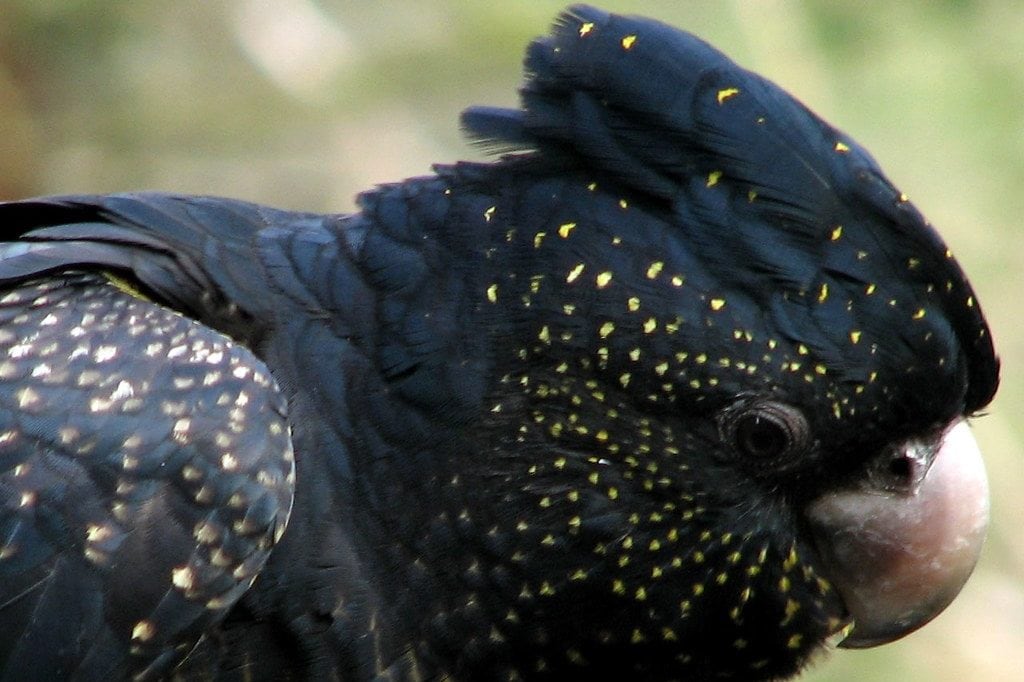
Native Australian Aboriginal Mythology:
In an Aboriginal creation story (16) – collectively called Dreaming – it is said that the Black Cockatoo was there from the beginning when there was only a peaceful void – a fertile emptiness like darkness over the plains. Within this darkness, the Great Mother dreamed herself into existence and immense nurturing energy began emanating from her. It is said that the Black Cockatoo holds the genetic memory from this time. From the Black Cockatoo’s spirit story comes the lesson of surrender most powerfully. We must accept with great patience what may come in the journey and which remains unknown in the beginning will reveal itself over the course of time.
While the Black Cockatoo’s story is of trust in allowing the path to unravel, the Sulphur-Crested Cockatoo is said to be able to illuminate mysteries within darkness. A story tells that if this bird eats a certain seed from a tree, its golden crest will appear bright even after darkness has encroached – revealing its surroundings.
Another story of the Sulphur-Crested Cockatoo from the Dream time, the age long ago when the world as we know it was being created is called ‘How the Robin Stole Fire’ (17). This was a time when the first people lived as birds and other animals and created the traditions and culture we have now. One day a group of hunter birds were returning to their village when they came across a very old man. He was very tired and so the birds invited him back to eat something. These birds did not know how to use fire to cook so the old man told the birds of his epic journey to the place where the sun is hidden. The old man told how, in this barren land, he saw Mar, the Cockatoo, secretively take out fire from under his wings, not sharing this marvel with anybody. To the old man, this knowledge was a gift in exchange for the kindness of the birds.
The birds quickly decided to try to steal the fire from Mar so they wouldn’t have to endure cold evenings and uncooked food any longer. First they tried luring Mar to a party with food and drink but this was unsuccessful. They then sent out a Robin named Tatkanna, to grab the fire from Mar when he was lighting a fire stick in the early morning. Tatkanna was so quick in stealing the stick that he ended up singeing all the feathers on his chest. In fright, he dropped the fire stick and accidentally set fire to the dry grassland. Once Mar realized what was happening he chased Tatkanna all the way back to the bird camp. Mar was so angry that his unique power had been taken away. He knew that he would have to steal back the fire or he would just be just a regular, unimportant Cockatoo.
In great hast from being chased by Mar, Tatkanna pleaded with Quartang, the Kookaburra to defend him. When Mar arrived at the camp a fight broke out and Mar being bigger and stronger than Quartang, won the battle. But, strangely, he did not feel avenged. He thus fell into a depression and walked away – leaving a fire burning with the birds. The birds were very pleased and celebrated into the night. They invited nearby tribes and shared their newly claimed gift of fire with all. Now, whenever tribal people now see a Cockatoo, they remember how fire was stolen from him.
This moral of this story clearly demonstrates the importance that the traditional cultures from Australia give to the sharing of resources and caring for the community. In this way, the Cockatoo is the creature to be made fun of as the spirit of this animal is one of light-heartedness and is deeply respected by Aboriginal people.
Cockatoo Spirit Animal
If a Black Cockatoo shows up in your field of life, something significant is unraveling itself. It may be saying that in order to see the path ahead, you must have patience and trust in what will be. This mystery in your life may require more surrender than you’re accustomed to and Black Cockatoo is showing up as your guide in these unknown territories. (18)
If you have had an encounter with some element of the Sulphur-Crested Cockatoo spirit, you may be needing more illumination in your life’s path as this bird spirit can guide those who are feeling aimless. The Sulphur-Crested Cockatoo encourages us to consider whether there is some form of darkness obscuring our path. When we are unsure whether our vision is clear or if intuition is serving us fully, Sulphur-Crested Cockatoo may reveal itself in your life. (19)
However, if the Cockatoo in question has flown dramatically and noisily into your awareness, it may be a sign that you need to be more aware of what is going on around you. This may a kind of danger or it may just be a strong wake-up call that you need to explore more and work on your sense of curiosity – not to stop when you’re still in darkness. (20)
Cockatoo Totem Animal
Cockatoo people are heavy on mischief, comedy and are highly social characters. If you prefer to devote your energies to a committed relationship and also love being in large groups of other gregarious people; if you enjoy noisy banter with friends and family and are highly affectionate – then you likely have Cockatoo as your totem spirit. (21)
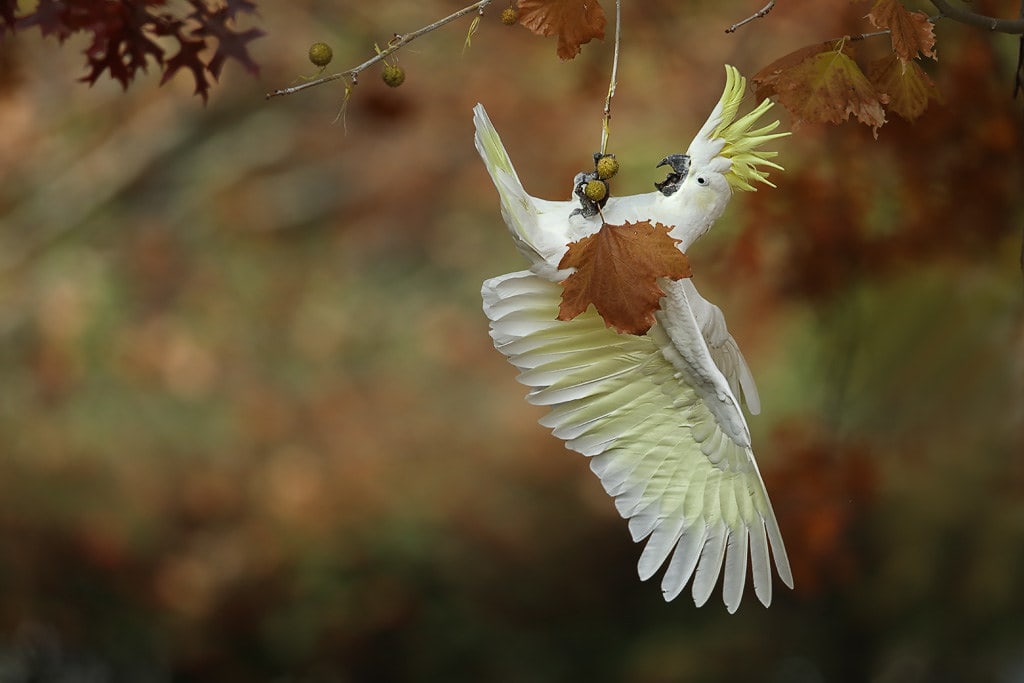
This jovial nature that prioritises enjoyment over most things however, can sometimes get Cockatoo people into trouble. They may be blind-sighted to their effects on others. Just as the Cockatoo bird can cause much damage with their beaks (by destroying the hollow homes of others simply for enjoyment and for something to do) people with this totem and personality may find that their unthoughtful words can cause harm to others.
In saying this though, Cockatoo people are extremely loyal and will trust and dedicate themselves to others without question. This high level of commitment is a trait of the Cockatoo spirit – mating for life, Cockatoos have been known to become ‘depressed’ if their mate dies. They are strictly monogamous with their partners, having a ‘divorce’ rate of practically zero, according to one Cockatoo expert. This goes as well for when they are kept as pet birds. They develop a very strong bond with their owners and due to their high level of intelligence, they can even be quite demanding of affection and interaction. A domestic Cockatoo deprived of interaction with their owner can lead to behaviour akin to self-harm – whereby they may pluck out their own feathers until they are left bare. (22)
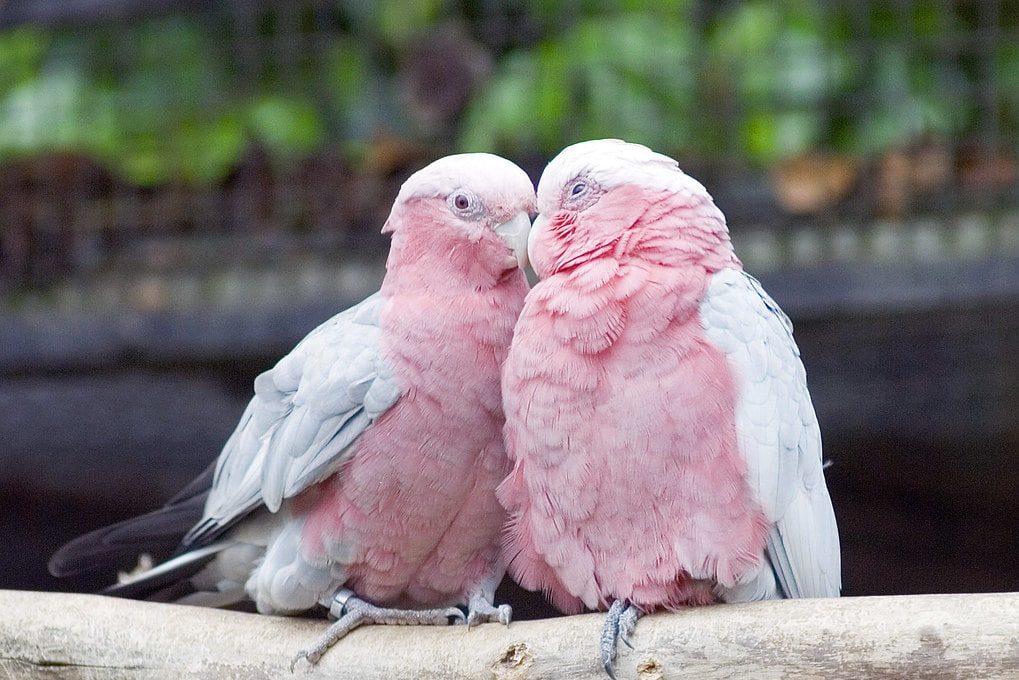
Cockatoo Power Animal
Call upon the Sulphur-Crested Cockatoo if you’re in need of a light to guide your path in life. If you’re feeling aimless, let Sulphur-Crested Cockatoo be your guide. If you are lost or in a depression, this power animal can act as your light at the end of the tunnel – a sign that there is light and positive things ahead. The Black Cockatoo can be a refuge of strength when you feel that you need to surrender to the vast unknowns of the universe. It takes great strength to be accepting and unassuming of the future. Whilst, if you have a sense that there are some truths that need revealing in your life, if there are some obstacles getting in your way of clarity and stability, the Sulphur-Crested Cockatoo would be best to call upon at this a time.
Cockatoo Tattoo Meaning
Cockatoo tattoo symbolism is closely linked to that of other parrots with their own unique character! Generally speaking, these tattoos would represent partnership, magnificence, guardianship and cleverness. (23) Given the connection to Aboriginal Australian folklore, Cockatoos additionally represent the universal knowledge of birth, death and rebirth at this relation to the fertility of the land. They also are connected, depending upon the species, to both the lunar and solar energies and the feminine and masculine forces in the universe.
Conclusion
Cockatoos are protectors, companions, comedians and nuisances. They are iconic birds wherever they are found and are impossible not to notice. Those people who resonate or who have had strong encounters with Cockatoos will understand their gregariousness, love of life and ‘loud-mouth’ characteristics. They are very loyal, affectionate animals as well as possessing an extreme intelligence – unchallenged by most all else. Aboriginal Australians have depicted these birds in various stories and mythologies and they remain a cultural symbol of illumination and living life to the fullest.
| More Spirit Animal Symbolism to Read About: |
|---|
| Cassowary Symbolism & Meaning Chickadee Symbolism & Meaning Catbird Symbolism & Meaning Canary Symbolism & Meaning Stork Symbolism & Meaning |

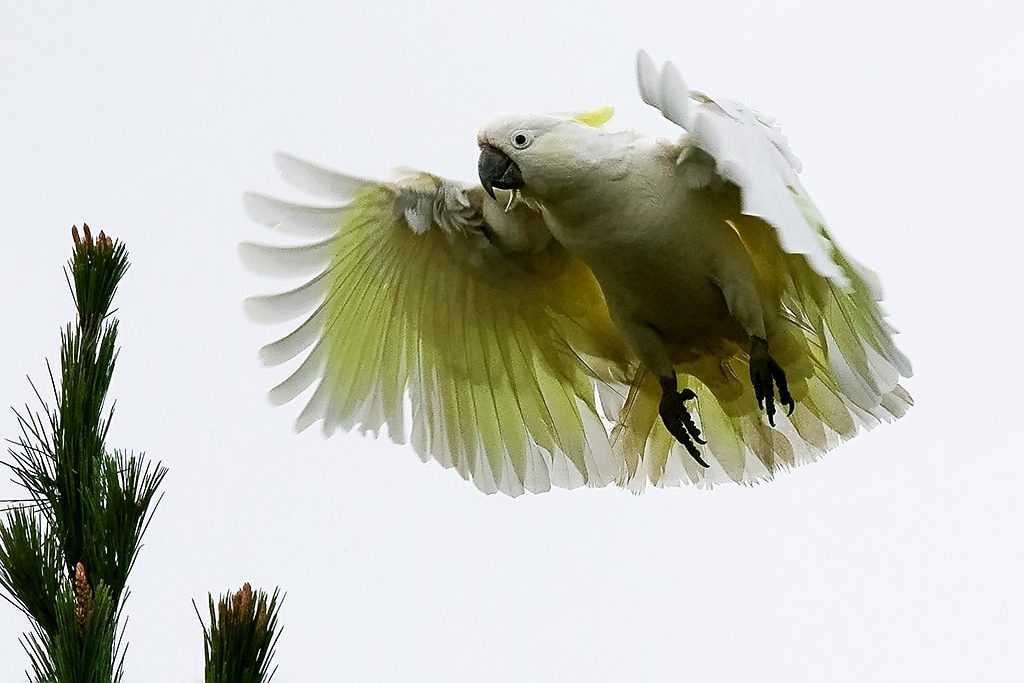
Clare, this is an incredible read. So enlightening and so true. These cockatoos are protective and the mythology is so so real and true every which way.
I have had singular Yellow tailed black cockatoo encounters of late. But seriously, I’m seeing and hearing these magnificent birds everywhere since about 3 months ago! I drive and get out of my car and there are 3. Then 5 and 2. I go back home and there they are again. Continuously telling me they are there! I’m seeing a crackle at least 3 times daily and single sightings also.
Thanks for this highly informative and inspirational article on Cockatoos. I’ve been visited twice in 2 weeks by a crackle of Corellas and was interested to find out more about them.